1 May
Far East, Burma
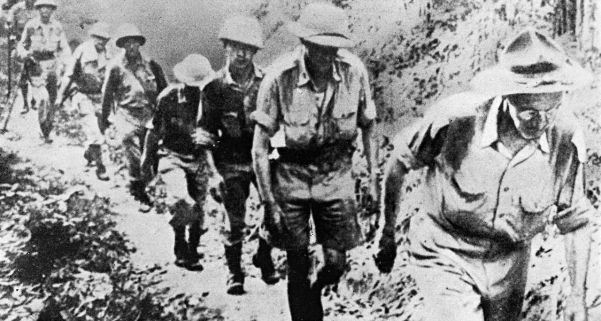
The city of Mandalay falls to the Japanese. The Allies are now retreating, with the Chinese Sixth Army heading for the Chinese province of Yunnan. Units of the Fifth and Sixty-sixth Armies withdraw to Yunnan or northern Burma. General Joseph Stilwell leads a 100-strong group on a 400-mile (600-km) journey to Imphal, India. Heavy rain hampers the Allied retreat.
Home Front, Soviet Union
A six-month evacuation commences, which is intended to move the besieged citizens of Leningrad to safety across Lake Ladoga. Around 448,700 people are taken out of the city.
2 May
Sea War, Pacific
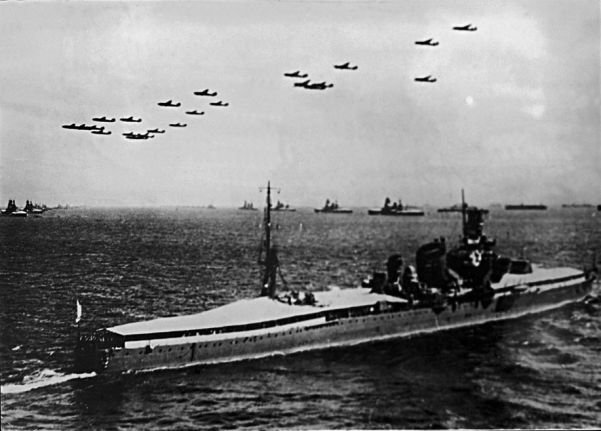
Japan deploys a large carrier force to surprise the US Pacific Fleet in the Coral Sea as part of its plan to establish greater control of the Solomon Islands. A key aim is to seize Port Moresby on the southwest Pacific island of Papua New Guinea, which would facilitate bomber attacks on Australia and help sever its communications with the United States. The Japanese have a Carrier Striking Force containing the carriers Shokaku and Zuikaku under Vice Admiral Takeo Takagi. They also have a Covering Group that includes the carrier Shoho, plus four heavy cruisers under Rear Admiral Aritomo Goto. There is also the Port Moresby Invasion Group and a support force. US codebreaking enables Admiral Chester Nimitz, the US Pacific Fleet commander, to prepare his forces. He deliberately withdraws from Tulagi in the Solomons before a Japanese attack in order to reinforce their belief that only one US carrier is operating in the area.
3 May
Sea War, Pacific
US Rear Admiral Frank Fletcher’s Task Force 17, including the carrier Yorktown, damages a Japanese destroyer, three minesweepers, and five aircraft off Tulagi during the Coral Sea engagement.
5-7 May
Africa, Madagascar
Britain launches Operation Ironclad, the invasion of Vichy French Madagascar, with a battleship and two aircraft carriers carrying a landing force. The occupation is intended to deny Axis forces access to the island. An armed Vichy merchant cruiser and submarine are lost. A British vessel is mined. The Diego Suarez naval base surrenders on the 7th.
5-10 May
Pacific, Philippines
US and Filipino forces on Corregidor finally surrender after a Japanese landing on the island. Some 12,495 US and Filipino troops (including Major Generals Jonathan Wainright and Edward King) are captured. The Philippines campaign has claimed 140,000 US and Filipino lives, plus 4000 Japanese dead.
6-7 May
Sea War, Pacific
Although the opposing Japanese and US carrier groups are only 70 miles (112 km) apart, their reconnaissance flights fail to locate each other. Australian and US cruisers in Task Force 44, under British Rear Admiral Sir John Crace, are then sent to find the Port Moresby Invasion Group. Although poor weather prevents an attack, the unfolding battle leads the group to turn back to its Rabaul base on the 7th. Japanese aircraft sink the US destroyer Sims, and the tanker Neosho (which is mistaken for a carrier) is scuttled. US forces successfully destroy the Shoho and 21 aircraft that attempt to engage the US carriers.
8 May
Sea War, Pacific
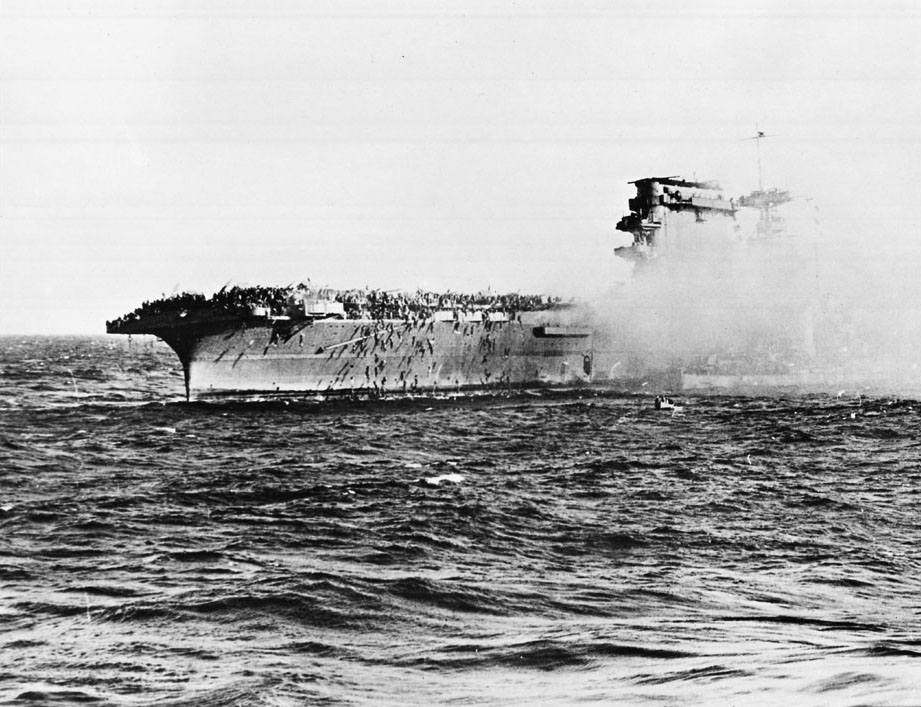
US aircraft damage the Shokaku, while Zuikaku’s aircraft losses are very serious in the Battle of the Coral Sea. Japanese aircraft hit the Lexington, which is later scuttled, and damage the Yorktown. This is the first ever battle fought exclusively with carrier aircraft. The US Navy loses a carrier but repairs to the Yorktown are speedy. Japan loses a smaller carrier while the other two Coral Sea carriers will be unfit for action in the approaching battle at Midway. Large numbers of Japanese aircraft and experienced pilots have also been lost. The abandonment of the Port Moresby landing is the first major blow to Japanese expansionism.
8-15 May
Eastern Front, Crimea
The German Eleventh Army launches its attack against the Soviet Crimean Front. The Soviets resume their attempt to surround German units against the Sea of Azov in a battle around Kharkov. Germany’s Eleventh Army captures the Crimean Kerch Peninsula on the 15th and continues to fight along the Donets River.
11 May
Politics, Canada
Full conscription is introduced following a referendum on the issue, the only significant opposition being in Quebec province.
Far East, Burma
British and Commonwealth troops fight a last, bitter battle at Kalewa before the remaining forces in Burma finally enter the border region with India and eventually reach Imphal. Japan now has control over some 80 percent of Burma.
Sea War, Mediterranean
A special German bomber force locates and sinks the British destroyers Kipling, Lively, and Jackal to the west of Alexandria, Egypt.
14 May
Espionage, United States
US codebreakers deciphering Japanese radio messages obtain their first intelligence about the impending Japanese operation to destroy the US Pacific Fleet in the central Pacific Ocean by drawing into battle around Midway.
15 May
Far East, India
British and Commonwealth forces retreating from Burma begin to arrive in India. Some 13,463 British, Indian, and Burmese troops have been killed in the Burma campaign thus far.
The 95,000-strong Chinese force has been decimated, while Japan has suffered an estimated 5000-8000 casualties to date.
18 May
Politics, Britain
Admiral Harwood assumes command of the British Mediterranean Fleet.
22 May
Politics, Mexico
The Mexican government declares war on Germany, Italy, and Japan.
25 May
Politics, Australia
Three people are arrested for conspiring to establish a fascist government to negotiate peace terms with Japan.
26-31 May
Africa, Libya
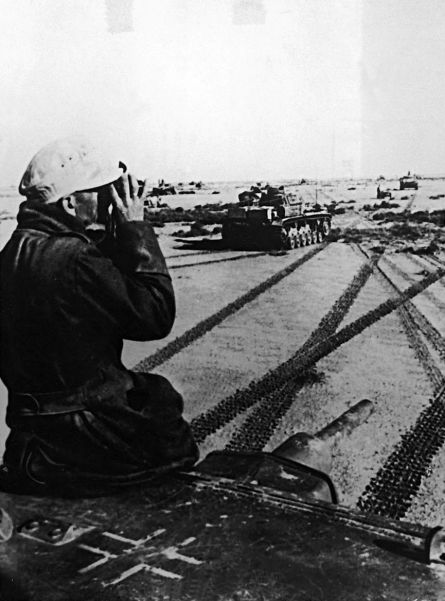
General Erwin Rommel attacks the Gazala Line in Libya. Italian armor strikes at Bir Hacheim, 40 miles (60 km) from the coast, but is repulsed by Free French troops. Axis tanks try to outflank the Allied lines beyond Bir Hacheim. Although the British Eighth Army has 850 tanks (plus 150 in reserve), the Axis forces deploy their 630 tanks more effectively, and their antitank guns present a serious threat. British armor and aircraft engage Axis tanks at the Knightsbridge crossroads, behind the Gazala Line. Axis armor suffers serious fuel problems until the Italians penetrate the Gazala Line to bring up fresh supplies on the 31st.
27 May
Home Front, Czechoslovakia
British-trained Czech agents attack Reinhard Heydrich, the deputy chief of the SS, who has been appointed deputy governor of occupied Czechoslovakia. Heydrich is traveling in an open-top car without an escort when the agents strike.
30 May
Air War, Germany
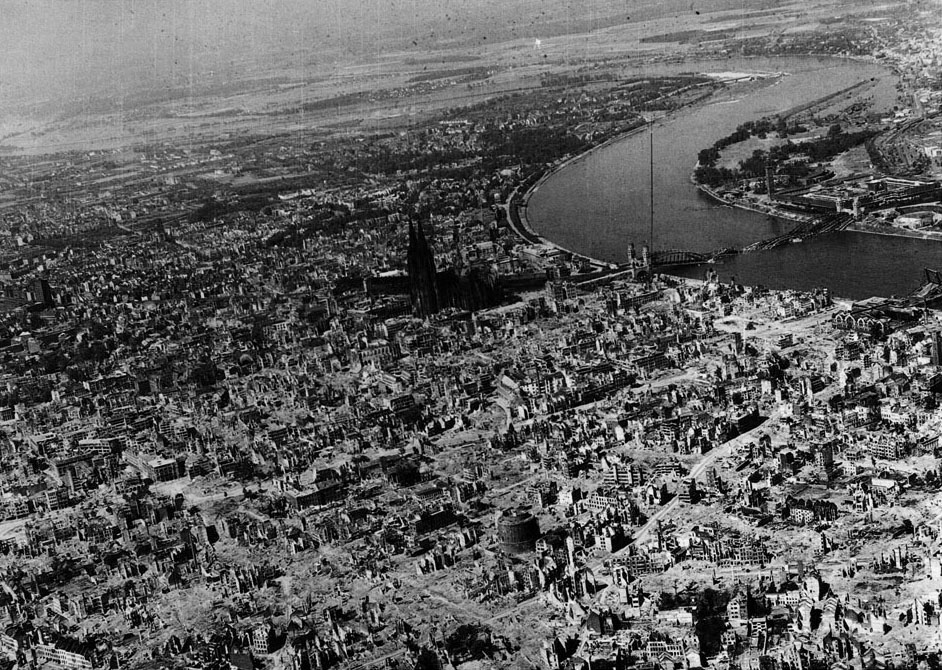
Britain launches its first ‘1000 Bomber’ raid. The target is Cologne. Over 59,000 people are made homeless. The British lose 40 aircraft.
31 May
Air War, Germany
British Mosquito bombers, constructed from wood, make the first of many raids over Germany.
